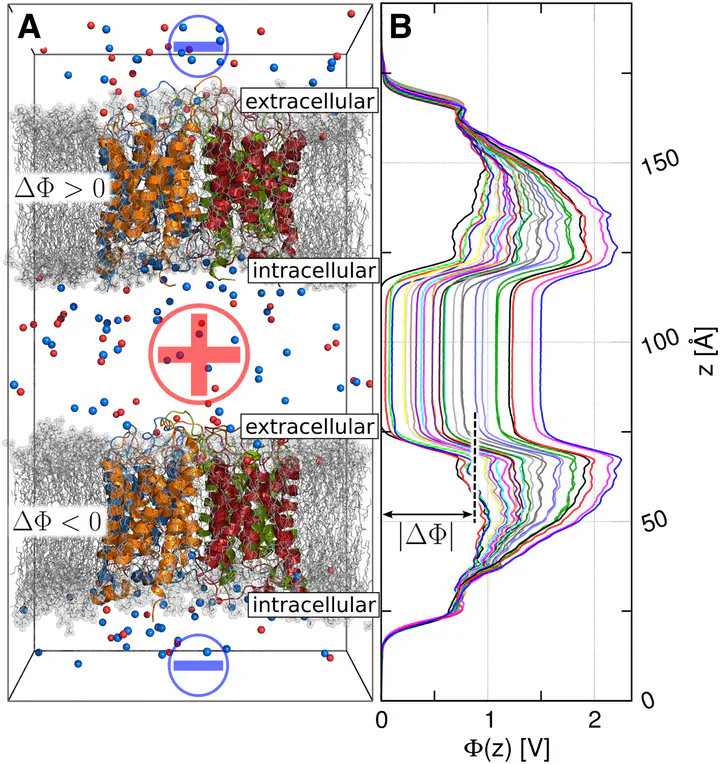Voltage-Regulated Water Flux through Aquaporin Channels In Silico

Abstract
Aquaporins (AQPs) facilitate the passive flux of water across biological membranes in response to an osmotic pressure. A number of AQPs, for instance in plants and yeast, have been proposed to be regulated by phosphorylation, cation concentration, pH change, or membrane-mediated mechanical stress. Here we report an extensive set of molecular dynamics simulations of AQP1 and AQP4 subject to large membrane potentials in the range of ±1.5 V, suggesting that AQPs may in addition be regulated by an electrostatic potential. As the regulatory mechanism we identified the relative population of two different states of the conserved arginine in the aromatic/arginine constriction region. A positive membrane potential was found to stabilize the arginine in an up-state, which allows rapid water flux, whereas a negative potential favors a down-state, which reduces the single-channel water permeability.